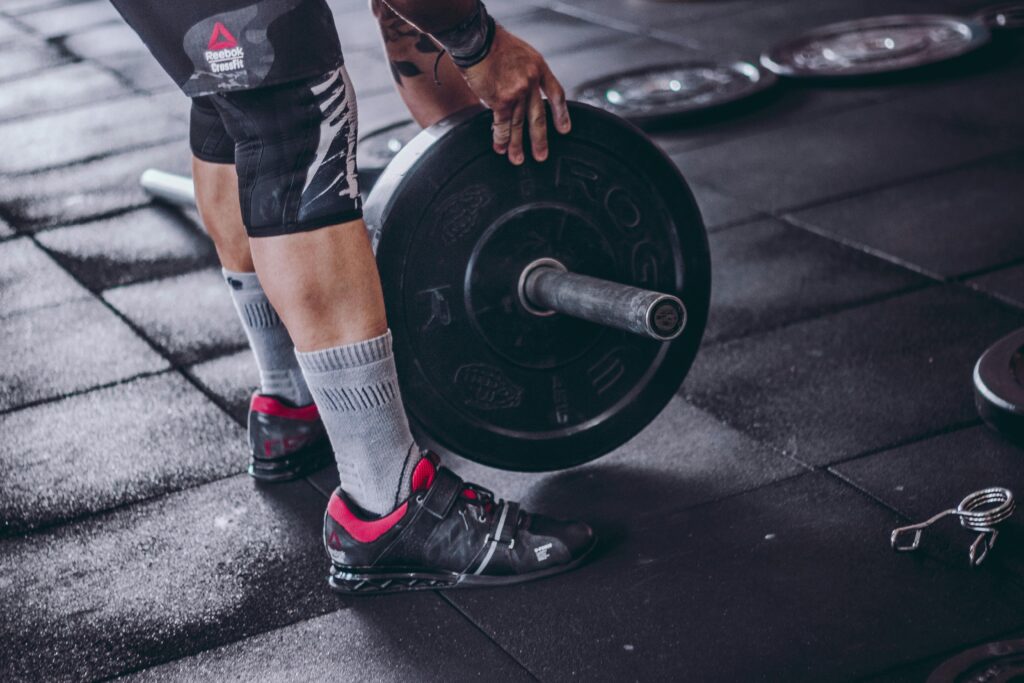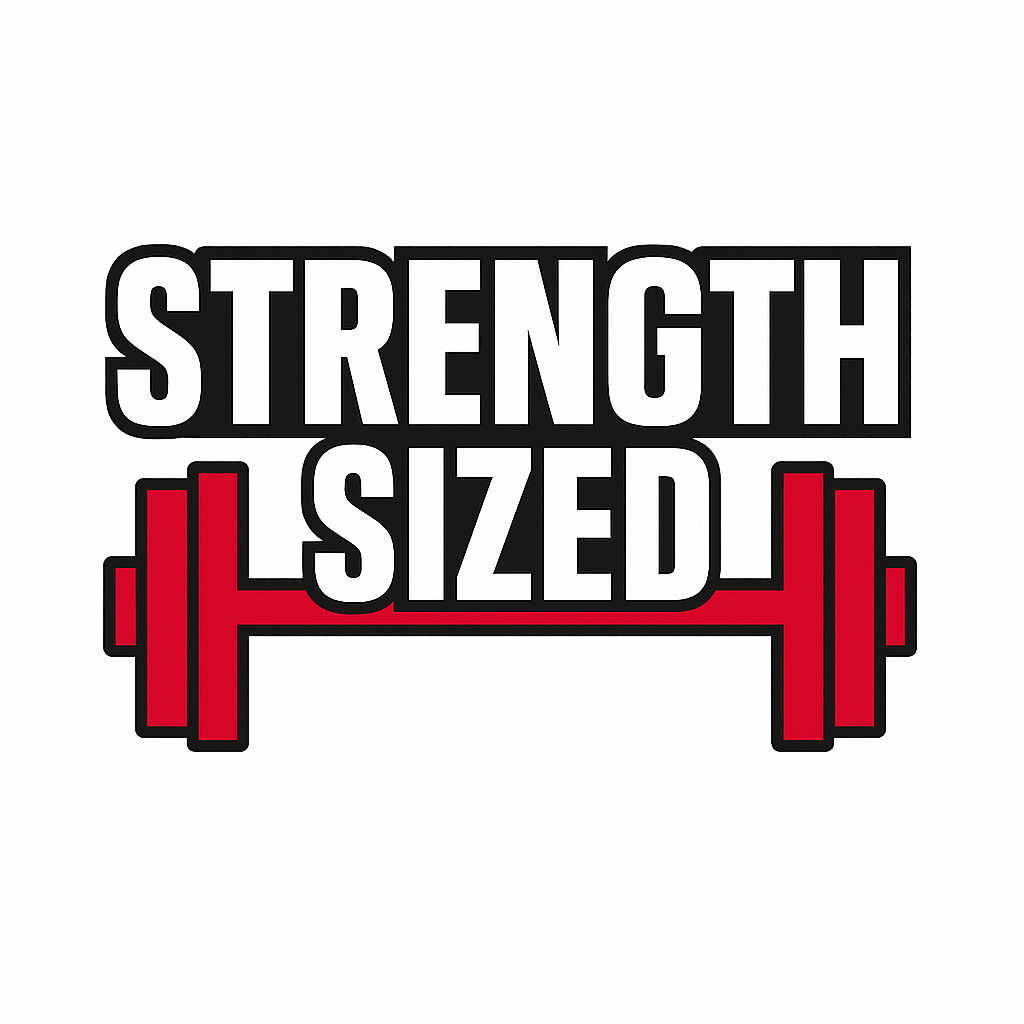If you’ve spent any time at the gym, you’ve probably seen someone wearing solid, high-heel shoes and wondered — do weightlifting shoes actually help — and do you really need them? This article breaks down what they do, who they’re for, and whether you actually need them.

What Are Weightlifting Shoes?
Weightlifting shoes are designed for squatting, Olympic lifting, and other compound barbell lifts that benefit from maximizing stability. Their key features include:
- Raised heel: Typically between 0.6 and 1 inch (1.5 – 2.5 cm), helping improve ankle range of motion.
- Rigid sole: A non-compressible base for better force transfer into the floor, made from high density foam, wood or plastic.
- Midfoot strap: Added lockdown to prevent foot slippage.
They’re not good for running or Sunday walks. They’re made for one purpose: lifting.
Benefits of Weightlifting Shoes
1. Improved Squat Depth and Posture
One of the biggest benefits of weightlifting shoes is their ability to help lifters achieve better depth in the squat. The raised heel compensates for limited ankle mobility that many lifters suffer from, allowing your knees to track forward more easily. This results in a more upright torso, especially in high-bar squats and front squats.
2. Better Force Transfer
With a solid, non-compressible sole, none of your energy is wasted on squishy cushioning. This means more of your effort goes into lifting the weight, not sinking into the floor. It’s a small but meaningful edge, especially on heavier sets.
3. Increased Stability
Weightlifting shoes often have a wider, more stable base and midfoot straps that lock your foot down. This minimizes foot movement and gives you a more secure connection to the ground. This is essential for safety and confidence on heavy lifts.
Do You Need Weightlifting Shoes?
Not necessarily. Here’s a breakdown of when they’re worth it — and when they might not be.
You Might Not Need Them If:
- You’re a beginner still learning form with lighter weights.
- You train mostly with bodybuilding style exercises with less emphasis on heavy compound lifts *.
- You already have solid flat shoes and you squat deep comfortably in those.
* Although most lifts still benefit from having a stable base.
You Probably Need Them If:
- You have limited ankle mobility and struggle to hit depth on squats.
- You train in Olympic weightlifting or powerlifting style.
- You want maximum stability and consistent foot positioning under heavy loads.
Weightlifting Shoes for Women
Many weightlifting shoes are sized and shaped with men in mind, which can lead to poor fit for women, or other people with narrower feet. Fortunately, several brands now offer models in women’s-specific sizing or in unisex designs with smaller size options. Be sure to check our recommendations below.
When shopping for weightlifting shoes as a woman, look for:
- True women’s sizing: Some models come in women-specific sizes.
- Narrower lasts: A shoe that hugs the foot properly offers better stability under load.
Always prioritize fit and comfort. Poorly fitting shoes can limit your confidence and performance just as much as lifting in the wrong footwear altogether.
Things to Consider Before Buying
Can You Deadlift in Weightlifting Shoes
Flat shoes, like deadlift slippers or Vans are often recommended for deadlifting. This is because the raised heel of weightlifting shoes can shift your balance forward too much and slightly increase the pulling distance. Many serious deadlifters do pull with raised heel shoes however, especially outside of competitions, where every advantage counts. If you don’t want to buy multiple pairs of training shoes, you absolutely can deadlift in weightlifting shoes. It’s still way better than running shoes for sure.
Cost
Weightlifting shoes tend to be quite expensive, often ranging from $100 to $200+, but they should last you for years. Good quality shoes, along with a weightlifting belt, are among the best uses for your money in lifting equipment.
Recommended Lifting Shoes
As an Amazon Associate, we earn from qualifying purchases. This helps support the site at no extra cost to you.
Here are a few well known options for weightlifting shoes:
- Adidas Powerlift 5 – Great for beginners and budget-conscious lifters. Moderate heel height and good stability.
- Adidas Adipower 3 – Similar to Powerlift 5, but a little more sturdy construction and higher heel.
- Nike Romaleos 4 – Premium option with a high heel and ultra-rigid sole. Ideal for serious strength athletes.
- Reebok Legacy Lifter III – Balanced option with solid construction and a roomy toe box.
- TYR L-2 Lifter – Available in women’s sizes with excellent grip and lockdown.
Transitioning to Weightlifting Shoes: What to Expect
If you’ve been lifting in flat shoes or running shoes, switching to weightlifting shoes can feel like a surprising change — but it’s usually a good one. That raised heel doesn’t just look different; it subtly shifts your balance forward, which helps keep your torso upright in squats. But that shift also means you may need to adjust your technique.
Don’t be surprised if your first few sessions feel a bit awkward. Some lifters report feeling like they’re “falling forward” during squats or that their knees are tracking differently. That’s normal — your body is adapting to a new joint angle, especially at the ankles and hips.
To make the transition smoother, start using your new shoes on light to moderate squat days. Give yourself 2–3 sessions to adjust before going for any PRs. Pay attention to bar path, balance, and depth. If anything feels off, record your sets and check your form — it’s usually a small cue adjustment, not a problem with the shoes.
Over time, most lifters find that weightlifting shoes make their squats feel more solid and confident. Once you’ve adapted, you might wonder how you ever lifted without them.
Bottom Line
So, do weightlifting shoes actually help? Absolutely, but they’re not magic. They help improve squat mechanics, provide a more stable base, and make force transfer more efficient. But if you’re just getting started, focus on good technique first. Then, when your lifts are progressing and you’re squatting heavy consistently, lifting shoes can be a smart investment.
